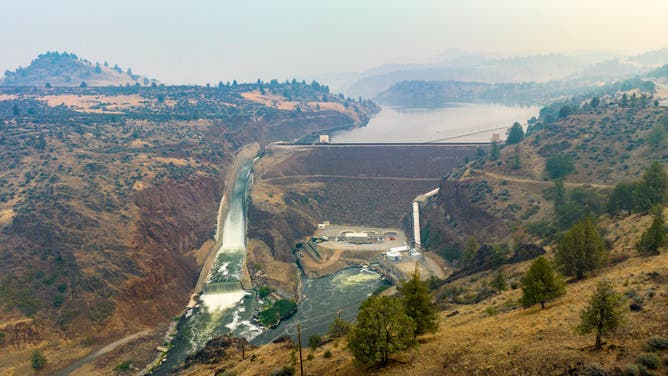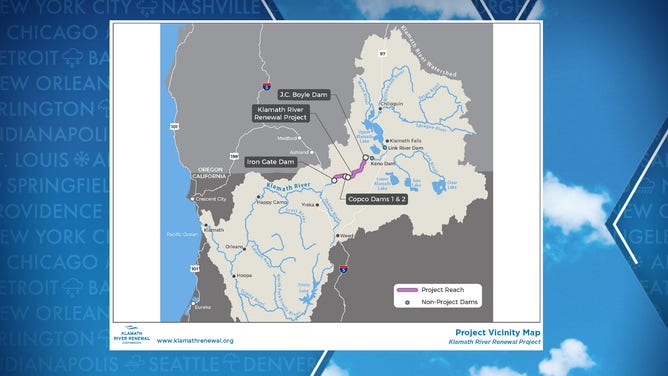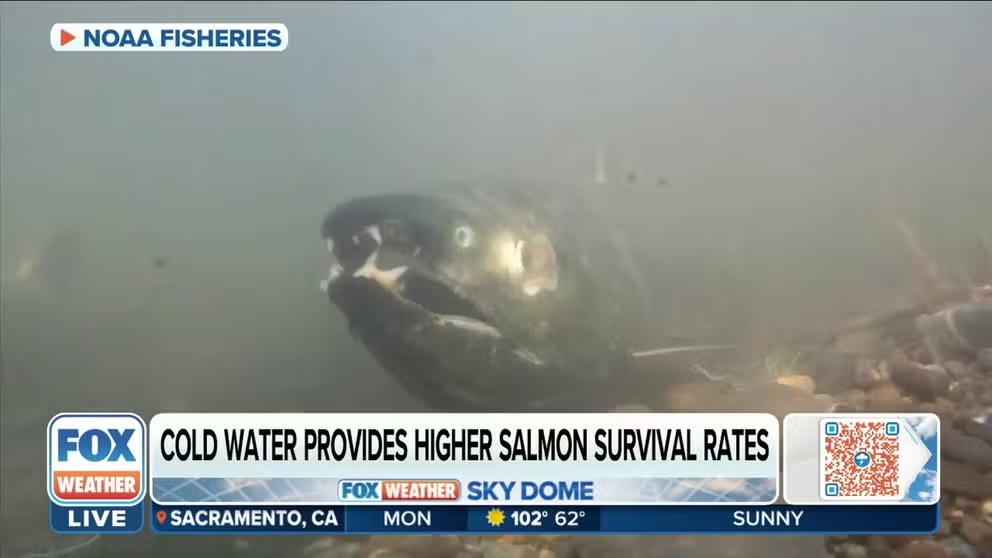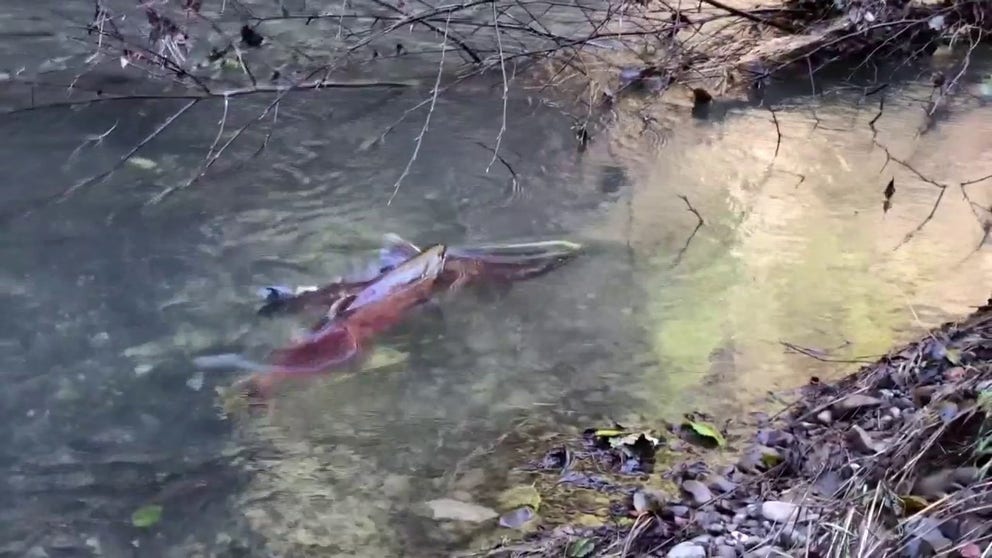World’s largest dam removal project nears completion
Every year thousands of salmon migrate from the Pacific into the Klamath watershed to spawn. Chinook salmon typically begin their run over the summer while the coho happens during the fall.
Salmon numbers rise and fall during El Nino and La Nina
Nate Mantua, Climate Scientist at NOAA Fisheries, explains how salmon numbers rise and fall during El Nino and La Nina.
A project to remove four dams and restore the Klamath River to a more natural state is nearing completion, bringing significant benefits to the salmon population near the California-Oregon border.
Officials say the half-billion-dollar Klamath River Renewal Project will restore 420 miles of the watershed for the first time since 1918.
PacifiCorp, the former owner of the hydroelectric dams, said removal of the dams was the most cost-effective option in restoring the watershed for the ecosystem.
"I think in September, we may have some Chinook salmon and steelhead moseying upstream and checking things out for the first time in over 60 years," Bob Pagliuco, a NOAA marine habitat resource specialist, said in a statement. "Based on what I’ve seen and what I know these fish can do, I think they will start occupying these habitats immediately. There won’t be any great numbers at first, but within several generations -10 to 15 years - new populations will be established."

Klamath, CA - August 18: A spillway, left, is filled with water at Iron Gate Dam where modifications to an existing tunnel are underway on Friday, Aug. 18, 2023 in Klamath, CA. The tunnel will be used to drain the lake nearly next year.
(Brian van der Brug / Los Angeles Times via Getty Images / Getty Images)
HOW SALMON NUMBERS RISE AND FALL DURING EL NINO AND LA NINA
According to Oregon wildlife officials, the watershed once supported the third-largest salmon run in the country, but populations of chinook and coho have declined significantly.
A salmon run is the annual migration of fish from the ocean to their spawning grounds, which are usually in fresh or brackish waters.
Since the construction of dams in the early 1900s, direct pathways have been blocked, limiting the number of fish that reach their spawning grounds.
Fish ladders and other devices employed around the dams have only been partially effective in getting substantial amounts of fish upriver.
In addition to the reduced number of fish reaching critical spawning areas, fluctuations in water temperature and oxygen levels are often linked to the presence of dams.
NOAA Fisheries warns that even with the removal of the hindrances, salmon populations will likely take years to fully rebound.
The results from the Elwha River dam removal project in Washington state, which took place from 2011 to 2014, give wildlife experts hope better days are ahead for the species.
In less than a decade since its completion, experts have observed substantial increases in salmon populations and improvements in the health of other fish-reliant animals.

Klamath dam removal project map
(Klamath River Renewal / FOX Weather)
RECORD-BREAKING HEAT, DROUGHT SHRINK HOOVER DAM’S ABILITY TO GENERATE POWER
In addition to the removal of the dams, NOAA Fishers has recommended an additional $20 million in funding to increase the population’s resiliency to climate change and human impacts.
"The Yurok people are extremely happy to be witnessing the beginning of the Klamath River’s rebirth," Barry McCovey, the director of the Yurok Tribe fisheries, stated. "The dams caused a tremendous amount of damage to the Klamath over the last century. Through the decommissioning project and holistic restoration, we are confident that we will see the Klamath’s salmon, steelhead, and Pacific lamprey runs recover."
Watch: Coho salmon fighting in Northern California
National Park Service Fishery Biologist Michael Reichmuth found a few male coho salmon fighting in the Olema Creek in the Point Reyes National Seashore, north of San Francisco.

